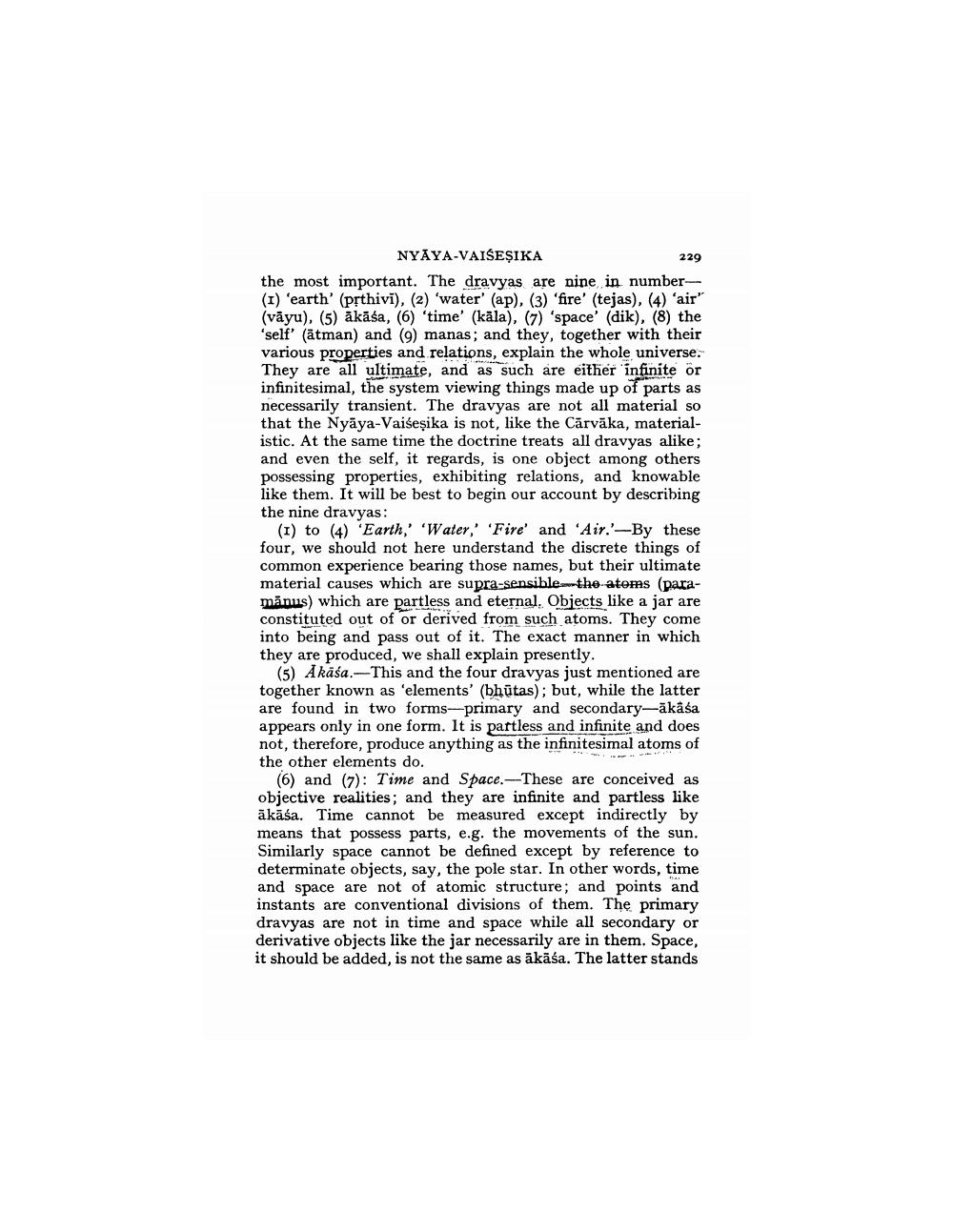________________
NYAYA-VAISEȘIKA
229 the most important. The dravyas are nine in number (1) 'earth' (prthivi), (2) 'water' (ap), (3) 'fire' (tejas), (4) 'air" (väyu), (5) akāśa, (6) 'time' (kāla), (7) 'space' (dik), (8) the 'self' (atman) and (9) manas; and they, together with their various properties and relations, explain the whole universe. They are all ultimate, and as such are either infinite ör infinitesimal, the system viewing things made up of parts as necessarily transient. The dravyas are not all material so that the Nyāya-Vaiseșika is not, like the Cārvāka, materialistic. At the same time the doctrine treats all dravyas alike; and even the self, it regards, is one object among others possessing properties, exhibiting relations, and knowable like them. It will be best to begin our account by describing the nine dravyas:
(1) to (4) 'Earth,' 'Water,' 'Fire' and 'Air.'-By these four, we should not here understand the discrete things of common experience bearing those names, but their ultimate material causes which are supra-sensible-the-atoms (paramanus) which are partless and eternal. Objects like a jar are constituted out of or derived from such atoms. They come into being and pass out of it. The exact manner in which they are produced, we shall explain presently.
(5) Akāśa.-This and the four dravyas just mentioned are together known as 'elements' (bhūtas); but, while the latter are found in two forms-primary and secondary-ākasa appears only in one form. It is partless and infinite and does not, therefore, produce anything as the infinitesimal atoms of the other elements do.
(6) and (7): Time and Space.-These are conceived as objective realities; and they are infinite and partless like ākāśa. Time cannot be measured except indirectly by means that possess parts, e.g. the movements of the sun. Similarly space cannot be defined except by reference to determinate objects, say, the pole star. In other words, time and space are not of atomic structure; and points and instants are conventional divisions of them. The primary dravyas are not in time and space while all secondary or derivative objects like the jar necessarily are in them. Space, it should be added, is not the same as ākāśa. The latter stands




